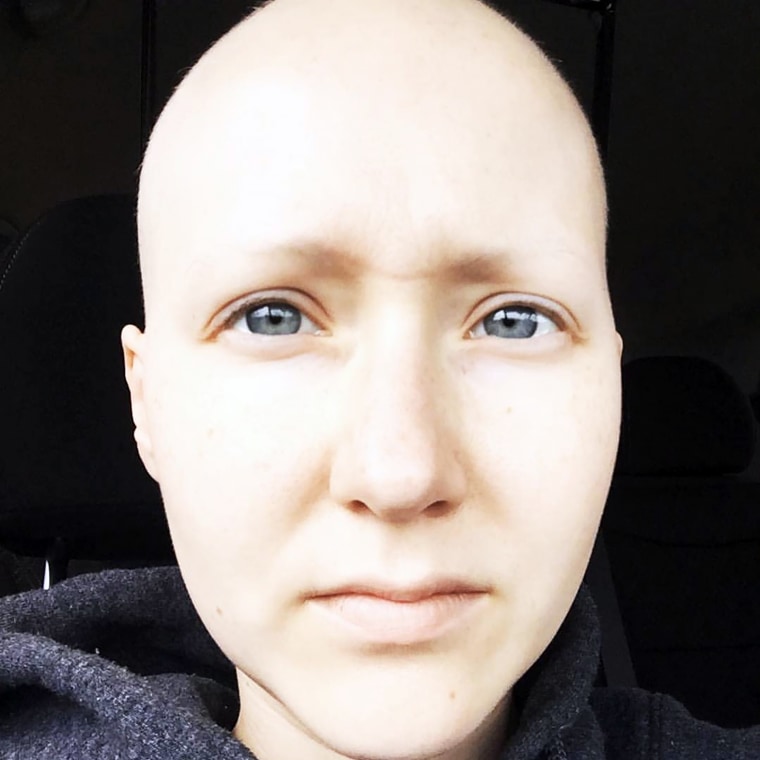In 2020, Anna Ogo underwent a pap smear as part of a routine checkup. Ogo felt stunned when the results were abnormal, and soon she learned she had cervical cancer.
“I knew that disease existed,” the 35-year-old from outside Seattle tells TODAY.com. “But I didn’t really know what it was.”
Ogo grew up in Japan and never received the HPV vaccine. There’s also a stigma surrounding human papillomavirus (HPV) and cervical cancer in her home country, she says.
“There’s a lot of misunderstanding around it. It’s related to sexual activities, and nobody wants to talk about it,” she says. “I felt shame and guilt.” (The vast majority of cervical cancer is caused by HPV, and HPV is the most common sexually transmitted infection, according to Columbia University Herbert Irving Comprehensive Cancer Center.)

As a teen, Morgan Newman understood the importance of regular pap smears in screening for cervical cancer. But when she was offered the HPV vaccine as a teen, she refused.
“My mom begged and begged me to get the vaccine, but I looked at her and I said, ‘That’ll never happen to me. I will never get that cancer,’” Newman, 33, of Norwalk, Iowa, tells TODAY.com. “Here I was eight years later, getting diagnosed with HPV-related cervical cancer.”The two women are sharing their stories to encourage people to receive the HPV vaccine and undergo regular cervical cancer screenings.
“If I could prevent someone else from making that same mistake, for thinking that this will never happen to them, (I want to),” Newman says.
Routine screening finds cancer
For both Ogo and Newman, a pap smear found their cervical cancers.
Before she was diagnosed in 2014 at age 24, Newman experienced pain and bleeding after sex that could have been an early sign of cervical cancer.
“I was in a new relationship, in the first couple of months, and things can get exciting, and you are exploring,” she says. “It was after having intercourse that I really noticed the bleeding became an issue.”
While she felt a little concerned, she didn’t address it immediately.
“As women, we really truly downplay our symptoms, our pain because we have so much else that we’re juggling,” she says.
About a month later, Newman received a pap smear, and the test detected abnormal cells. But she’d had friends who had abnormal pap smears in the past that turned out to be nothing, so Newman didn’t worry about it. When she underwent a colposcopy — a follow-up exam that allows doctors to get a closer look at cervical cells — she experienced terrible pain.

“The colposcopy was horrendous. I was hemorrhaging on the table. It was very painful,” she says. “I got referred to a gynecologic oncologist and I was 24 years old. I didn’t connect the dots.”
During the visit with the oncologist, she underwent a biopsy to test her cervical cells for cancer. Soon after, she learned what the biopsy uncovered.
“I heard the words, ‘I’m sorry, Miss Newman, but you have cervical cancer,’” she recalls. “I was absolutely surprised.”
Doctors diagnosed Newman with stage 3 cervical cancer because it had spread to three pelvic lymph nodes.
“I was definitely in shock. I was a little bit angry,” she says, adding that she was diagnosed with cervical adenocarcinoma.
Newman underwent six weeks of chemotherapy, external radiation treatment and internal radiation, also called brachytherapy.
“That was a traumatizing event for me because of the type of devices they use,” she says. “The thing that will never leave my memory is when they nurse asked if I had children, if I had ever gone into labor. … She said that when they were removing the device it was going to feel a lot like childbirth.”
Aside from the pain, it was a stark reminder that Newman will likely never carry children due to the cancer treatment.
“I live with that memory,” she says. “That’s the closest thing I will ever have to childbirth.”
Ogo’s treatment plan differed as she had an early-stage cervical cancer and her doctors opted for a radical hysterectomy, which included removing her cervix and uterus. She kept her ovaries but treatment temporarily put her in menopause.
“After two or three months, the (ovarian) function came back,” she says. “My doctors decided I was not in menopause, which was good news.”
Ogo still experiences side effects from treatment, including pain during urination and feeling like she has a urinary tract infection when she does not. She also feels frequent abdominal pain and pelvic floor pain.
“My vagina has become tense with scar tissue,” she says. “I have to go through pelvic floor physical therapy.” Ogo is in remission.
Following Newman’s treatment, doctors saw no evidence of disease, but at her three-month follow-up, she had spots in her lungs, meaning her cancer had returned and was stage 4. She underwent three more months of treatment and hasn’t had any recurrences since.
With Newman’s stage of cancer, “you’re automatically, they say, incurable,” she says. While you can go into remission, “it’s never really gone,” she adds.
Cervical cancer
The cervix is the bottom of the uterus and connects the vagina to the uterus, according to the National Cancer Institute. Human papillomavirus infections that linger in one’s body cause nearly all cervical cancer, the organization notes.
“HPV is an extremely common virus that is transmitted sexually, and by the time people have had three partners, 50% will have had HPV, and 80% of adults have had HPV at some point in their lives,” Dr. Linda Eckert, an OB-GYN and author of the book “Enough: Because We Can Stop Cervical Cancer,” tells TODAY.com. “Clearly, not everybody gets cancer.”
In many cases, people’s bodies “get rid of HPV,” but in some cases, it remains, Eckert says. “It’s only when it persists and stays around that it can cause precancerous changes.”
There are about 200 types of HPV, according to the World Health Organization, but only a dozen of then cause cancer, Eckert explains. HPV screening looks for those 12 high-risk types. The HPV vaccine protects people from five of the cancerous strains of the virus, Eckert says.
“If you can get this vaccine in your body before you get exposed to these viruses that cause cervical cancer, the vaccine is incredibly effective — almost 99% effective at preventing your body from acquiring an infection,” she says. “The primary prevention is (stopping) the infection from getting in the body in the first place.”
The U.S. Centers for Disease Control and Prevention recommend that parents vaccinate their children against HPV starting at 11 or 12 for boys and girls. The HPV is either two or three doses, depending on the age when vaccination starts. Many people don’t know that the HPV vaccine can also protect boys.
“They tend to offer it to men and boys for several reasons, No. 1 is throat cancer,” Eckert says noting that 60% to 70% of throat cancer is caused by HPV. HPV can also lead to penile and anal cancers.
Cervical cancer can be fatal, with most deaths occurring in developing nations. The World Health Organization estimates that 342,00 people died from it in 2020.
“(About) 90% of the cases of deaths of cervical cancer do occur in low-resource settings,” Eckert explains. “Cervical cancer tends to kill women between the ages of 35 to 50. Many of them have children.”
The World Health Organization has an ongoing initiative to eliminate cervical cancer, launched in 2020, which represents a “first,” Eckert says.
“We are feeling the burden of this cancer,” she says. “If you have a preventable cancer and you are not making it a high enough public health priority to prevent, it really is to me a statement about how we value women.”
Life after cervical cancer
Ogo and her husband welcomed a baby recently with the help of a surrogate. “That was such a blessing,” she says. “I feel very lucky.”
Life has been good, though Ogo feels anxiety before scans to check if her cancer has returned.

Newman works for Cervivor, a nonprofit that raises awareness of cervical cancer, and has two dogs. A few years ago, she climbed Mount Kilimanjaro. Both women said they wanted to share their stories so others do not experience what they did.
“I truly would never want anyone to walk through what I’ve been through and what I continue to walk through,” Newman says. “We have the tools to prevent cervical cancer.”




